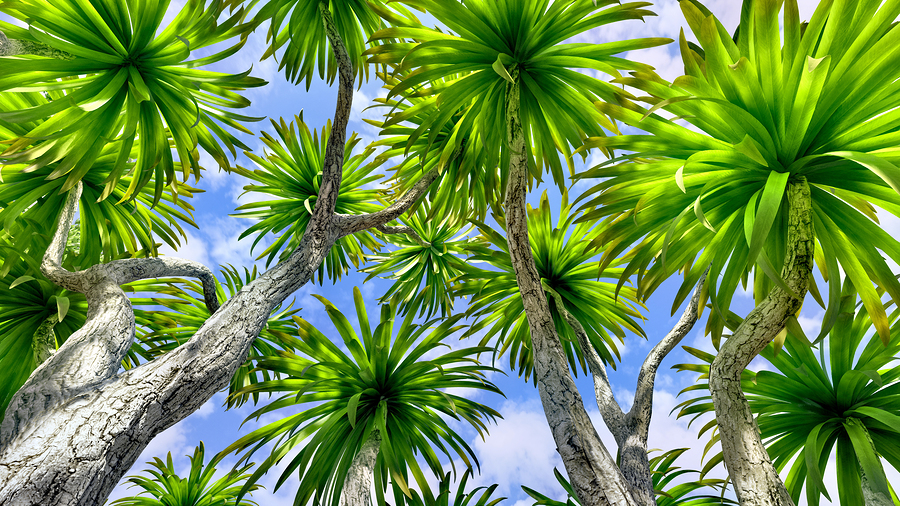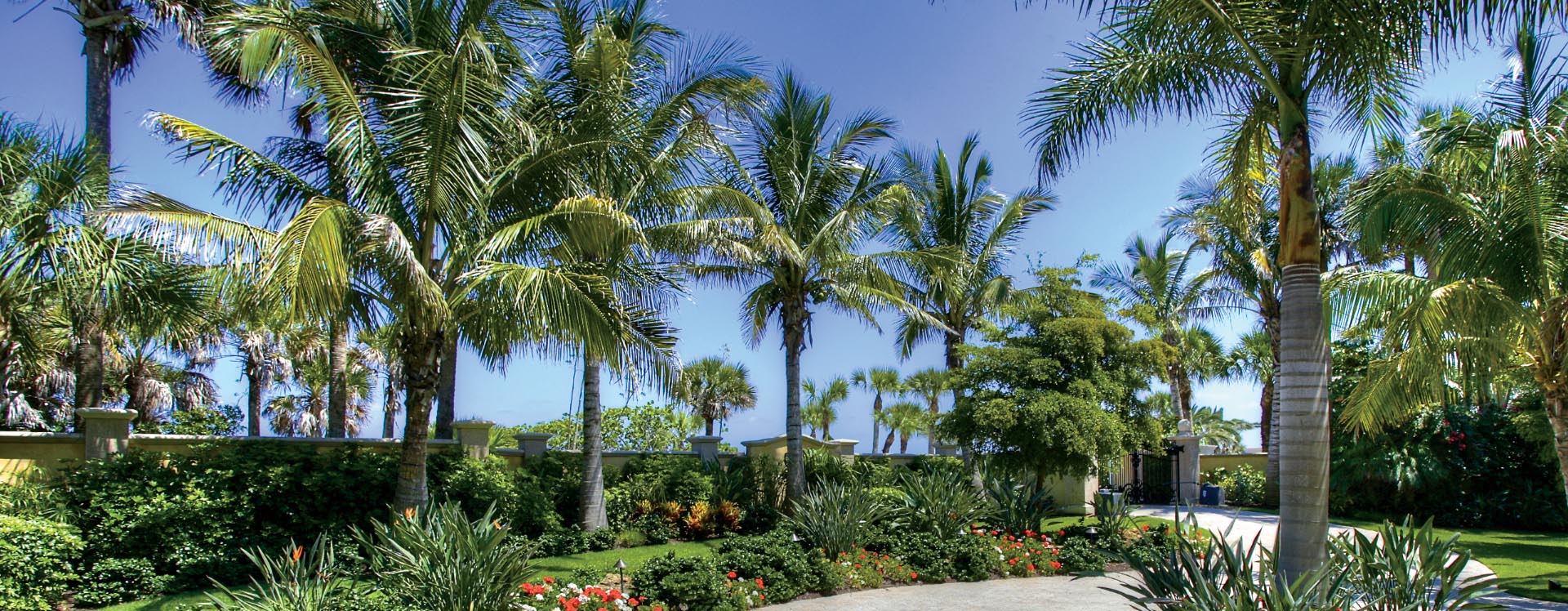
Florida’s landscape is synonymous with the swaying fronds and iconic silhouettes of palm trees. These majestic plants are not just a vital part of the state’s identity; they’re a living symbol of its tropical essence. At GreenEdge, we recognize the allure these trees hold and the value they add to both residential and commercial properties across the Sunshine State.
In this article, we delve into the world of Florida’s palm trees, exploring their rich diversity and the nuances of their care. From the towering Royal Palm to the hardy Sabal Palm, each species tells a story of adaptation and beauty that is unique to Florida’s warm climate and sandy soils.
As we unfold the pages of this palm tree narrative, we’ll address some of the most pressing questions for enthusiasts and homeowners alike. Are palm trees native to Florida? How should they be cared for to ensure they thrive in this environment? And just how many types of palm trees grace Florida’s landscapes?
Join us on this botanical journey as we explore the native species, share expert care tips, and celebrate the diversity of palm trees that make Florida’s landscapes a paradise for residents and a destination for visitors from around the world. With GreenEdge’s expertise, your appreciation for these tropical treasures is about to grow deeper.
Are Palm Trees Native to Florida?
The Origins of Florida’s Palm Trees
The history of palm trees in Florida is as old as the state’s sandy soils and humid air. These enduring symbols of the tropics have been part of Florida’s ecosystem for thousands of years, with fossil records indicating their presence since ancient times. The state’s warm climate, ample sunshine, and well-draining soils offer the perfect conditions for these tropical and subtropical plants to thrive.
Many of the palm species we see today have been a fixture in Florida’s landscapes long before European settlers set foot on its shores. These native species have adapted to the state’s diverse environments, from coastal beaches to inland swamps. They play a crucial role in Florida’s ecosystems, providing habitat and food for wildlife, protecting shorelines from erosion, and contributing to the state’s natural beauty. GreenEdge is proud to be a part of this long-standing tradition, offering expert care and maintenance to ensure these majestic palms continue to be an integral part of Florida’s landscape for generations to come.
Native vs. Non-Native Species
Florida is home to a variety of palm tree species, but not all palms dotting the landscape are native. Among the native species, the Sabal palmetto stands out as the state tree and is a common sight across many Floridian landscapes. Other natives include the Saw Palmetto, the Scrub Palmetto, and the Royal Palm, which is often seen as a regal emblem of the South Florida region.
In contrast, many palm trees have been introduced to Florida from other parts of the world and have adapted well to the local climate. These non-native palms, such as the Coconut Palm and the Queen Palm, have been integrated into the state’s horticulture due to their aesthetic appeal and ability to flourish in warm climates.
Understanding the distinction between native and non-native palm trees is essential for conservation efforts and for those looking to make ecologically responsible landscaping choices. Native palms typically require less maintenance, are more resistant to local pests and diseases, and provide better support for the local wildlife, making them an excellent choice for anyone looking to maintain the natural Floridian landscape.

Caring for Florida’s Palm Trees
Essential Maintenance Tips for Palm Trees
Proper maintenance is the cornerstone of palm tree care. Here are some essential tips:
- Watering: Young palms require consistent moisture as they establish. Mature palms are more drought-tolerant but benefit from occasional deep watering during dry spells, especially in sandy soils prevalent in many parts of Florida.
- Fertilizing: Use a specialized palm fertilizer that contains the right balance of nutrients, including micronutrients like magnesium and iron, to prevent deficiencies that are common in Florida’s often nutrient-poor soils.
- Pruning: Prune sparingly and carefully. Remove only dead or severely damaged fronds to avoid unnecessary wounds that can attract pests or diseases. Never “hurricane-cut” palms, as this can weaken and stress the tree.
Dealing with Pests and Diseases
Florida’s palms face several pests and diseases, but with vigilance and proper care, these can be managed effectively. Some common issues include:
- Palm Weevil and Scale Insects: These pests can be controlled with horticultural oils or systemic insecticides, but identifying infestations early is key to successful treatment.
- Lethal Yellowing and Ganoderma Butt Rot: These diseases can be fatal to palms. While there is no cure for Ganoderma, Lethal Yellowing can sometimes be managed with antibiotic injections if caught early.
Preventative care, such as proper fertilization and avoiding injuries to the palm, is the best defense against pests and diseases. Regular inspections by a certified arborist can help catch issues before they become severe, ensuring that palms continue to thrive in the local landscape.
The Diversity of Palm Trees in Florida
How Many Types of Palm Trees Are in Florida?
Florida’s warm climate serves as a nurturing ground for an astonishing variety of palm tree species. The state boasts over 2,500 species of palms, both native and introduced. This rich biodiversity is due to subtropical and tropical environments, which provide the ideal conditions for these species to flourish. From the towering Royal Palms to the scrubby Saw Palmettos, each species contributes its unique aesthetic and ecological benefits to landscapes.
Spotlight on Popular Florida Palm Tree Species
Among the plethora of palm species, several stand out for their popularity and adaptability:
- Sabal Palmetto (Cabbage Palm): Florida’s state tree, known for its resilience and historical significance.
- Coconut Palm (Cocos nucifera): Iconic for its fruit and synonymous with Florida’s tropical beaches.
- Royal Palm (Roystonea regia): Valued for its striking appearance and used to line streets and boulevards.
- Areca Palm (Dypsis lutescens): Often used as a privacy hedge and for its feathery, arching fronds.
- Bismarck Palm (Bismarckia nobilis): Notable for its massive silver-blue leaves and commanding presence.
Each of these species has become a familiar sight in various settings, from urban landscapes to natural preserves.
Choosing the Right Palm Tree for Your Landscape
Selecting the right palm tree for your Florida landscape involves considering several factors:
- Size and Space: Assess the mature size of the palm and the space available. Larger species like the Royal Palm need more room to grow, while smaller palms like the Areca can fit into tighter spaces.
- Sunlight and Soil: Match the palm to your site’s conditions. Some palms prefer full sun, while others thrive in partial shade. Soil type can also influence your choice, as some palms are more tolerant of wet or dry conditions than others.
- Maintenance and Care: Consider the level of care you can provide. Some palms require more frequent pruning or specific fertilization schedules.
You can choose a palm species that not only thrives in Florida’s climate but also complements the design and functionality of your landscape. Whether you’re looking for a striking solitary specimen or a grouping for privacy or wind protection, there’s a Florida palm tree suited to every need and setting.

Embracing Florida’s Palm Tree Heritage
As we’ve journeyed through the verdant world of palm trees with GreenEdge, we’ve uncovered the rich tapestry of species that adorn this sun-kissed state. From the stately Sabal Palmetto, a native symbol of Floridian resilience, to the exotic allure of the Coconut Palm, each species weaves its own story into the landscape.
The diversity of palm trees is a testament to the state’s lush, dynamic ecosystems, and choosing the right palm for your landscape is an opportunity to contribute to this vibrant natural heritage. Whether you’re enhancing a commercial property or creating a tropical oasis in your backyard, the right palm tree can make all the difference.
If you’re inspired to bring a piece of palm tree legacy into your garden or need expert advice on care and maintenance, GreenEdge is here to help. Contact us at (941) 888-7711 or use our convenient online contact form to get in touch with our team of knowledgeable professionals. Let’s work together to celebrate and preserve the beauty and diversity of palm trees in Florida’s landscape.
